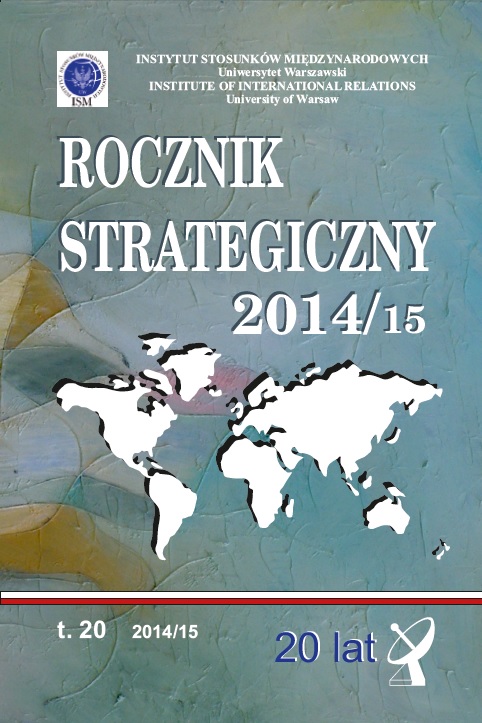Region Azji i Pacyfiku w 2014 roku pod znakiem wyłaniającego się bipolarnego układu USA-Chiny
THE ASIA-PACIFIC REGION IN 2014 IN THE CONTEXT OF THE EMERGING BIPOLAR US-CHINA ORDER
Author(s): Edward HaliżakSubject(s): Politics / Political Sciences, Politics, International relations/trade
Published by: Wydawnictwo Naukowe Scholar Sp. z o.o.
Keywords: Asia-Pacific; pivot; rebalancing; Thailand; Indonesia, Joko Widodo; Shinzo Abe; South China Sea; ASEAN
Summary/Abstract: In 2014, the international relations in the Asia-Pacific region were dominated by the United States and China, which were the two most important poles of influence. Furthermore, bilateral relations between these powers gained a new significance as they became the most important bilateral relation in the region and in the world. The characteristic feature of the US–China bipolarism is their intensive rivalry and cooperation at the same time. In 2014, the United States and China proposed a number of competing projects regarding the regional order. The United States undertook the implementation of the “pivot” strategy through rapprochement with the ASEAN states, as evidenced by the US President Barack Obama’s participation in the first US–ASEAN summit. China, in turn, hosted the annual APEC summit in November, and used it to present its own proposals regarding regional economic cooperation and security. The most important political event in the region was the visit of the US President in Beijing, during which a series of very important decisions were made, for example liberalization of the visa regime and an agreement on the climate package.
Journal: Rocznik Strategiczny
- Issue Year: 2014
- Issue No: 20
- Page Range: 283-297
- Page Count: 14
- Language: Polish

